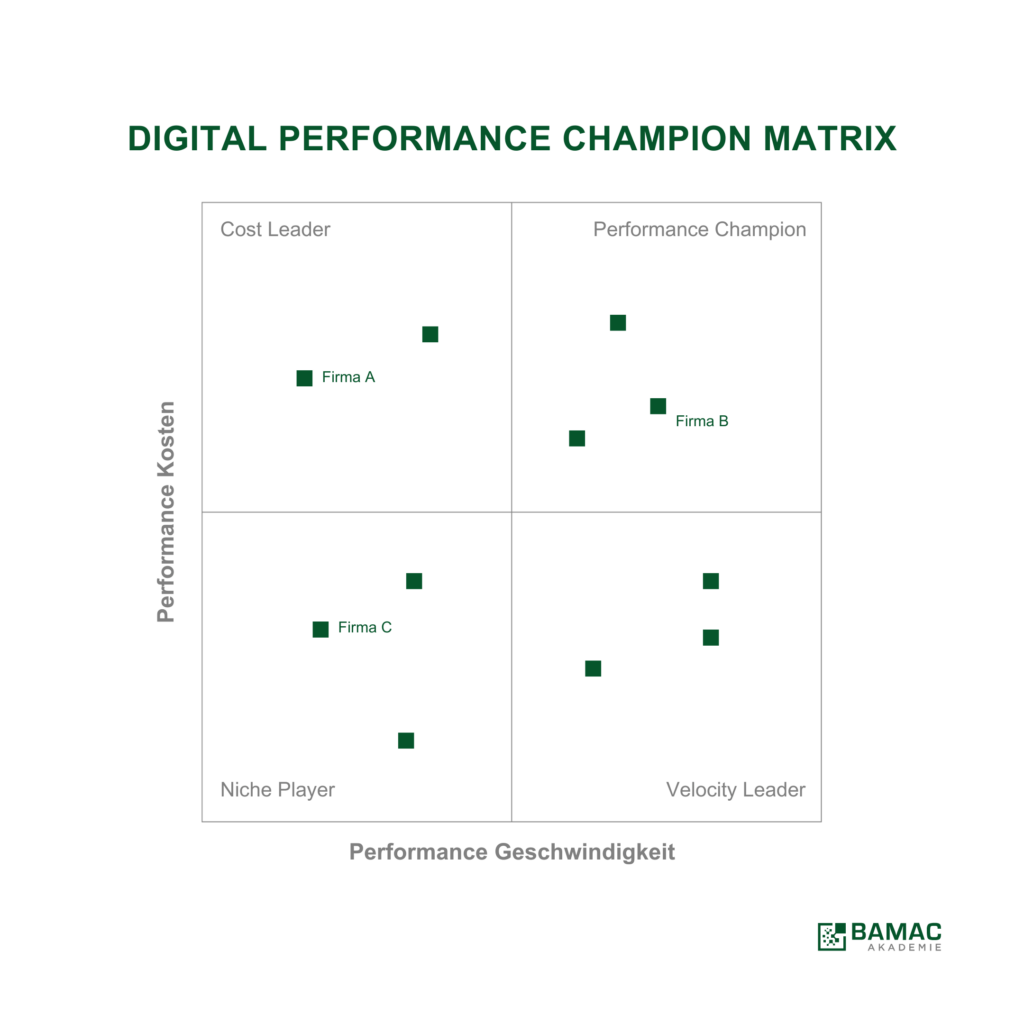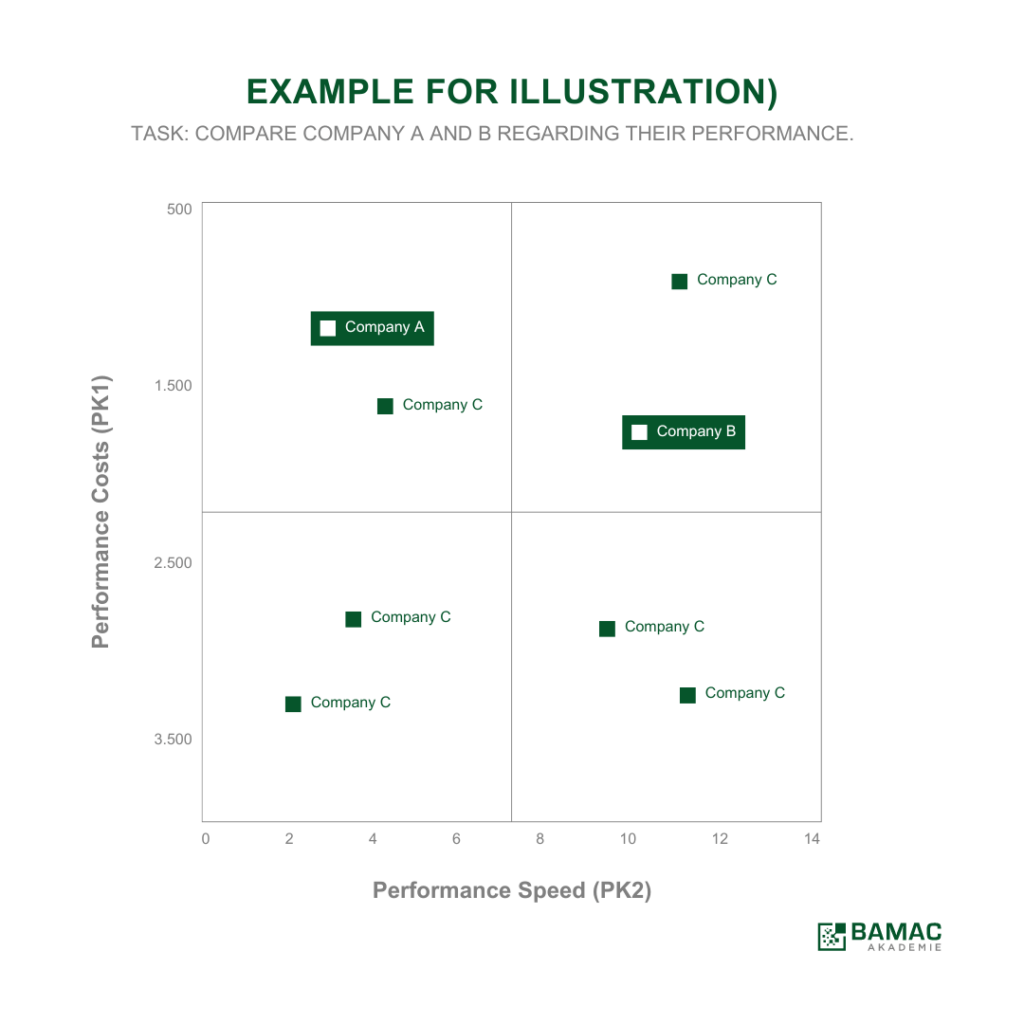The BAMAC Performance Matrix
The BAMAC Performance Matrix is an indication of the performance of companies, projects and products in software development. In this article, we will introduce you to the special features of the BAMAC Performance Matrix and show you how you can actively benefit from it.
The ability to successfully provide software is the key competence in the digitalisation of companies and therefore an important competitive factor. This includes both the development of customised solutions (in-house development) and the provision of standard software such as SAP (SAP, non-SAP). Knowing and subsequently comparing the performance of software provision with third parties therefore provides important information regarding your own performance and the selection of sourcing partners. In this article, we will introduce you to the special features of the BAMAC Performance Matrix and show you how you can actively benefit from it.
Advantages of the BAMAC Performance Matrix
In other words, the BAMAC Performance Matrices are a valuable tool for investors looking for companies that meet their software delivery needs. Furthermore, companies can compare themselves with their competitors to identify potential weaknesses.

How does it work?
We use the BAMAC Performance Matrix as an instrument for this. This is both a research method and a visualisation tool for monitoring and evaluating a company’s position in a specific technology market. The following features are used for implementation:
- Standardised procedures
The determination of performance indicators is based on standardised procedures (ISO certified). This forms the legal basis for the comparative approach. - Performance Costs (PK1)
For the performance cost dimension, the calculation is based on the metric euro per normalised function (PK1). This establishes a relationship between costs and scope of functions. - Performance Speed (PK2)
For the performance speed dimension, the calculation is based on the metric number of standardised functions per person-month (PK2). This relates the realisable scope of functions to the number of people (person-month or person-hours). - Limitation:
The BAMAC Performance Matrix provides no indication of whether the functionalities you are planning are useful.
Instead of showing countless statistics and ranking companies, you can use the two-dimensional matrix to easily illustrate strengths and differences between companies. The visualisation divides competing companies into four different sections (quadrants) based on the associated company data. The ability to provide high-performance software is at the centre of interest. The following figure illustrates this.

By performance, we mean both speed, i.e. the ability to provide software quickly, and the costs incurred for a comparable range of functions.
The four quadrants of the BAMAC Performance Matrix are:
- I. Niche Players:
The companies listed here only achieve low productivity in terms of speed and implementation costs. These companies may be good in their specific market segment, but are outperformed by larger players. The players focus primarily on functionality, a specific region or are new to the market. - II. Cost Leaders:
These companies focus on the cost of providing software. They are able to pass on cost benefits to their customers. However, it is not possible for them to realise the implementation quickly. The cost advantages are often realised by companies in in-house development. Cost leaders are usually smaller, agile companies that want to compete or larger companies that want to break out of their niche. - III. Velocity Leaders:
Have the ability to develop software quickly, but usually lack cost efficiency. Velocity leaders are usually agile companies that are developing new technologies or larger providers in standard software segments. To realise cost efficiency, they usually lack efficient processes for provision or experience. They have the opportunity to become performance leaders if they further develop their processes with the help of standardisation and automation and thus reduce their costs. - IV. Performance Champions:
Achieve an excellent score at a high speed and low cost. Champions are usually companies in mature markets with a large customer base. They have a strong appeal in their specific industry and can steer their market sector in a new direction.
Please note:
While it may seem that companies in the “Performance Champion” quadrant are always the best option, we advise users to look closely at all quadrants of the BAMAC Performance Matrix. Some companies in specific sectors have their own strengths and weaknesses that need to be taken into account. It is also worth noting that the BAMAC performance matrices were developed to narrow down the search for a supplier, not to tell a customer which supplier to choose.
Show the world how good your team is!
You can take part in our Digital Performance Champion study via the BAMAC Academy and find out how your IT is performing.
Further information on participating in the Digital Performance Champion can be found here.
Categories of this post
Further interesting posts.




